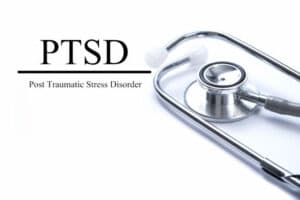

Federal Law Trumps Ohio’s New Constitutional Carry Law
- Best marijuana strains for treating nausea.
- How medical marijuana helps treat nausea.
- How cannabinoids and terpenes affect nausea.
- Studies on medical marijuana for nausea.
- Best cannabis products for treating nausea
In 2016 Ohio made the choice, like many other states did that year, to legalize medical marijuana. Patients suffering from certain qualifying medical conditions are eligible for an Ohio medical marijuana card. The card gives patients the legal right to purchase marijuana and cannabis-infused medicines at licensed dispensaries. The move was a big step toward ending cannabis prohibition in Ohio.
However, having a medical marijuana card in Ohio comes at a cost. In the eyes of the federal government, anyone who admits to using marijuana instantly loses their Second Amendment right to bear arms.
Regardless of cannabis being legalized for medical use in Ohio, at the federal level, cannabis is still labeled a Schedule I drug along with heroin. Under federal law, Schedule I drugs are described as drugs with no presently acknowledged medical use and likely potential for abuse.
Because of this fact, medical marijuana patients are deemed to be breaking federal law and are therefore prohibited from owning or purchasing guns or ammunition. To purchase a gun anywhere in the U.S. buyers are required to fill out a federal background check form that asks whether or not the buyer uses marijuana. If the buyer admits to using marijuana they instantly fail the background check. And lying on the form is a felony.
Furthermore, patients were required by law to turn over ownership of their weapons when they received a medical marijuana card. Ultimately this was an issue because few wanted to give up their constitutional rights simply because they changed their medicine.
Ohio eliminates concealed carry permit
Recently, Ohio Gov. Mike DeWine signed a bill into law eliminating the need for a permit in order to carry a concealed firearm in the state.
Prior to the law being signed, anyone who wanted to carry a concealed weapon in Ohio had to take a comprehensive eight-hour firearm training course and pass the aforementioned federal background check.
Senate Bill 215 allows anyone at least 21 who is legally allowed to have a gun to carry a concealed handgun without a permit. Restrictions on carrying guns in certain places like courthouses remain in place. Additionally, if the police stop a driver, that person would no longer be required to inform officers of the concealed weapon unless specifically asked whether or not they are carrying a weapon. When asked about carrying a concealed weapon, lying to an officer is a misdemeanor.
Sadly, the new law does not alleviate the fact that medical marijuana patients are still not legally permitted to own a gun. Cannabis is still a Schedule I drug. Buyers are still required to pass the federal background check. They still fail if they admit to using marijuana. And they’re still committing a felony if they lie.
Permitless or “constitutional” carry laws have been gaining recognition around the country. Kentucky passed a similar bill in 2019. It was the 15th state to pass a law of the sort at the time. On March 2nd, Ohio became the 23rd, with five other states considering passing similar bills, including Ohio’s neighboring state, Indiana. There, Gov. Holcomb recently signed HEA 1296, stating that state residents ages 18+ will no longer be required to get a permit to carry a handgun.
Still, none of these states allow medical marijuana patients to buy a gun.
Will the federal government legalize marijuana?
What will it take for medical marijuana patients to regain their right to bear arms? Essentially, the federal government needs to remove marijuana from Schedule I. It could remove it from the list of controlled substances altogether, or it could move it to a less strict schedule. However, a change in schedule would cause a litany of problems for states with medical marijuana programs. Ideally, it needs to be removed from the list entirely.
Although there have been several attempts to end the federal prohibition of marijuana, none thus far have succeeded. However, On April 1st, the House of Representatives approved the Marijuana Opportunity Reinvestment and Expungement (MORE) Act, HR 3617. If the Senate passes the MORE act and it’s signed by President Biden, then marijuana will be removed from Schedule I and the problem will be solved.
In addition to legalizing marijuana and putting regulation in the hands of the states, under the MORE Act, a federal excise tax of 5% would be applied to all cannabis production. Tax revenue would be used for a Community Reinvestment Grant Program that will “fund eligible non-profit community organizations to provide a variety of services for individuals adversely impacted by the War on Drugs…to include job training, reentry services, legal aid for civil and criminal cases (including for expungement of cannabis convictions), among others.”
Moreover, federal agencies won’t be able to use “past or present cannabis or marijuana use as criteria for granting, denying, or rescinding a security clearance.” Most importantly for this discussion, anyone who failed a federal background check for using marijuana would be able to try again.
Thousands of people in Ohio are already benefiting from access to medical marijuana. Initially, in April of 2019, state officials predicted that Ohio’s Program would only have around 12,000-24,000 patients within the first two years of legalization. That number was exceeded in the first three months of legalizing medicinal medical marijuana in Ohio. According to the Marijuana Policy Project, there are now more than 186,000 patients in the Ohio medical marijuana registry.









